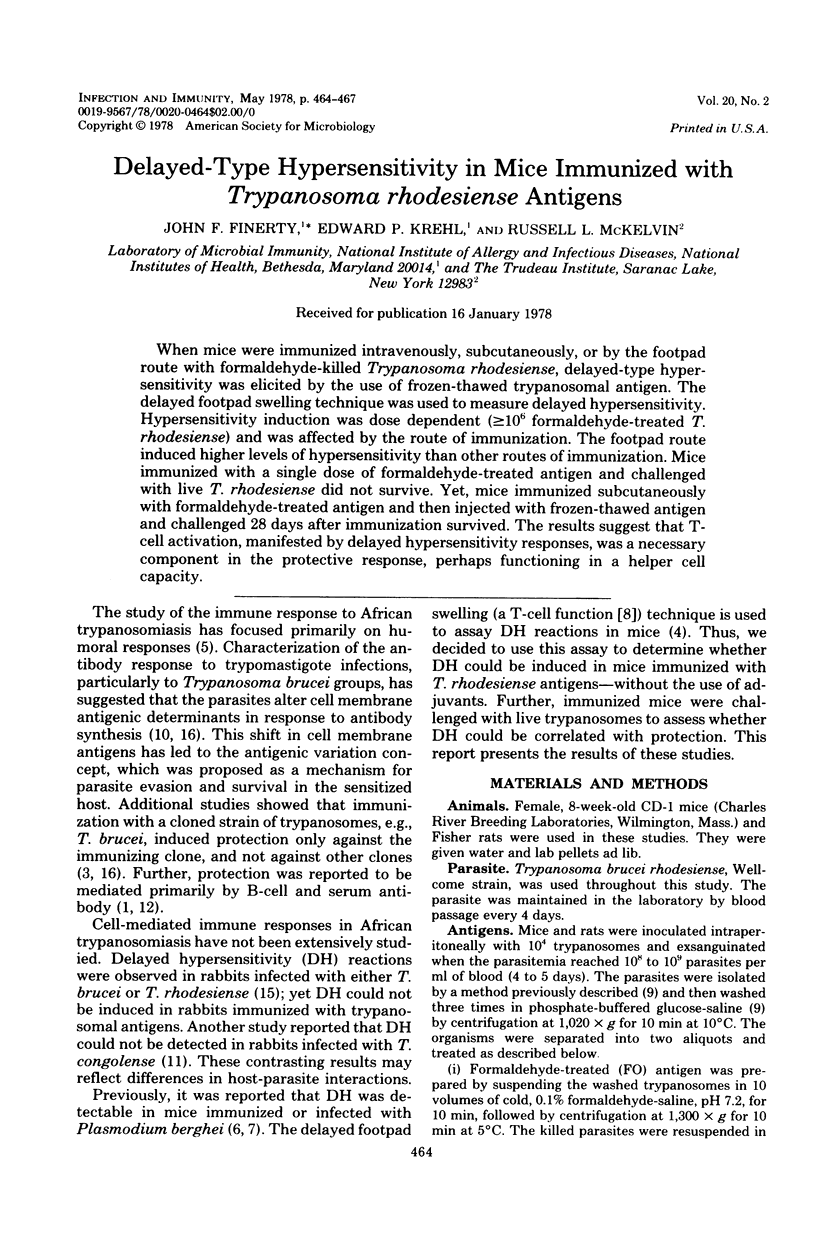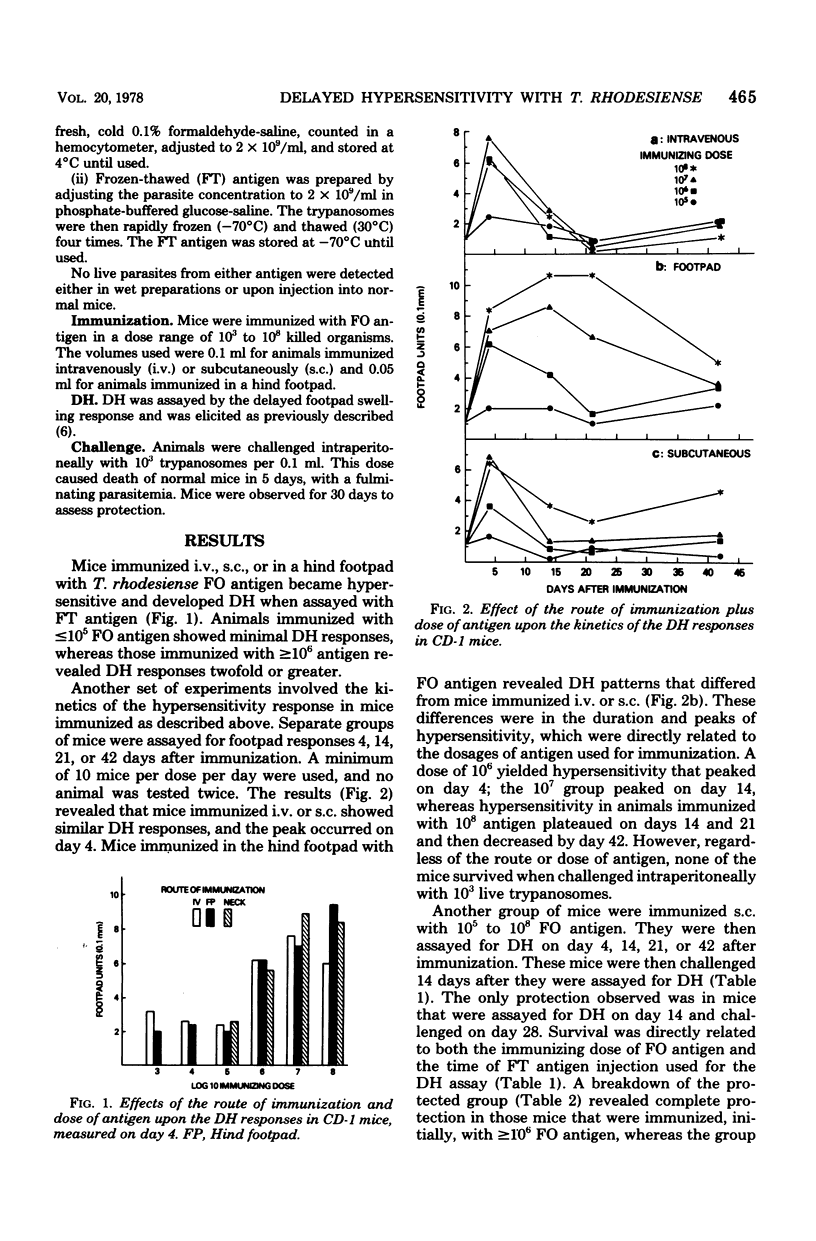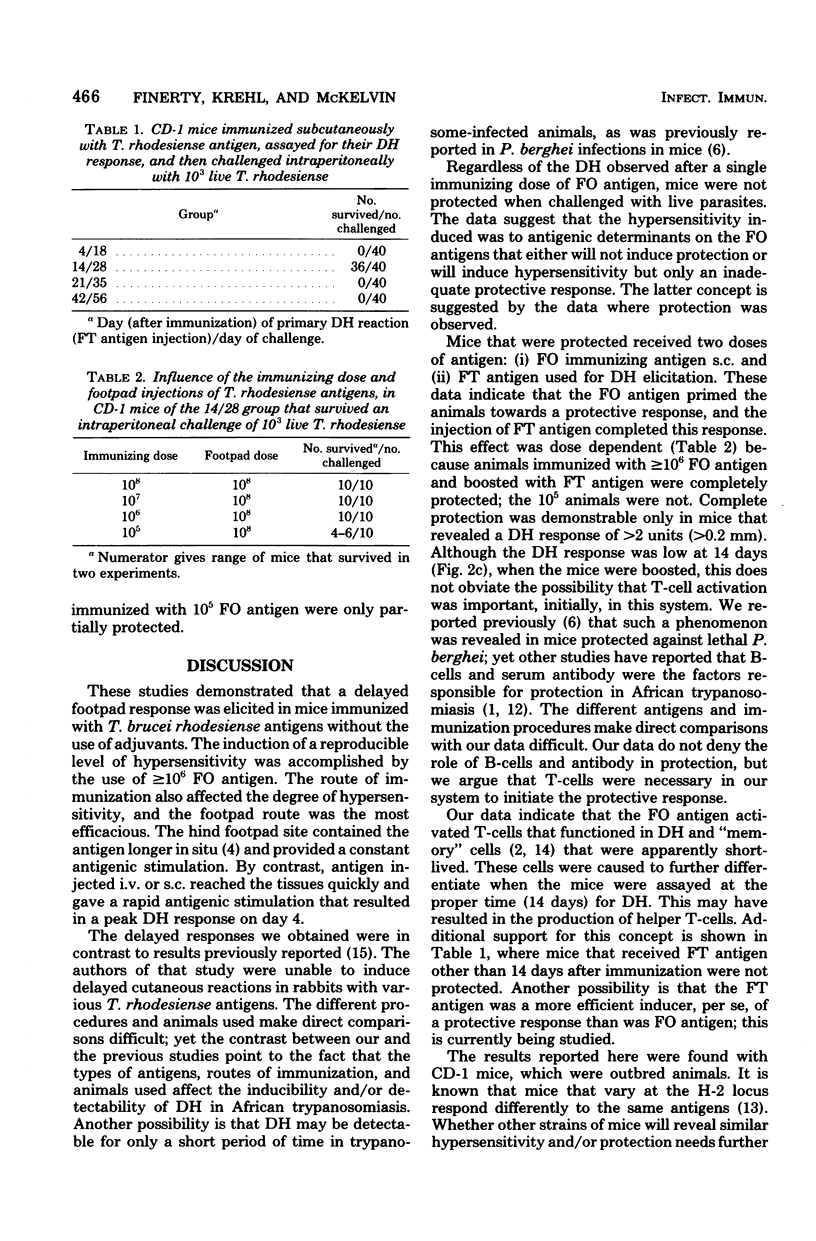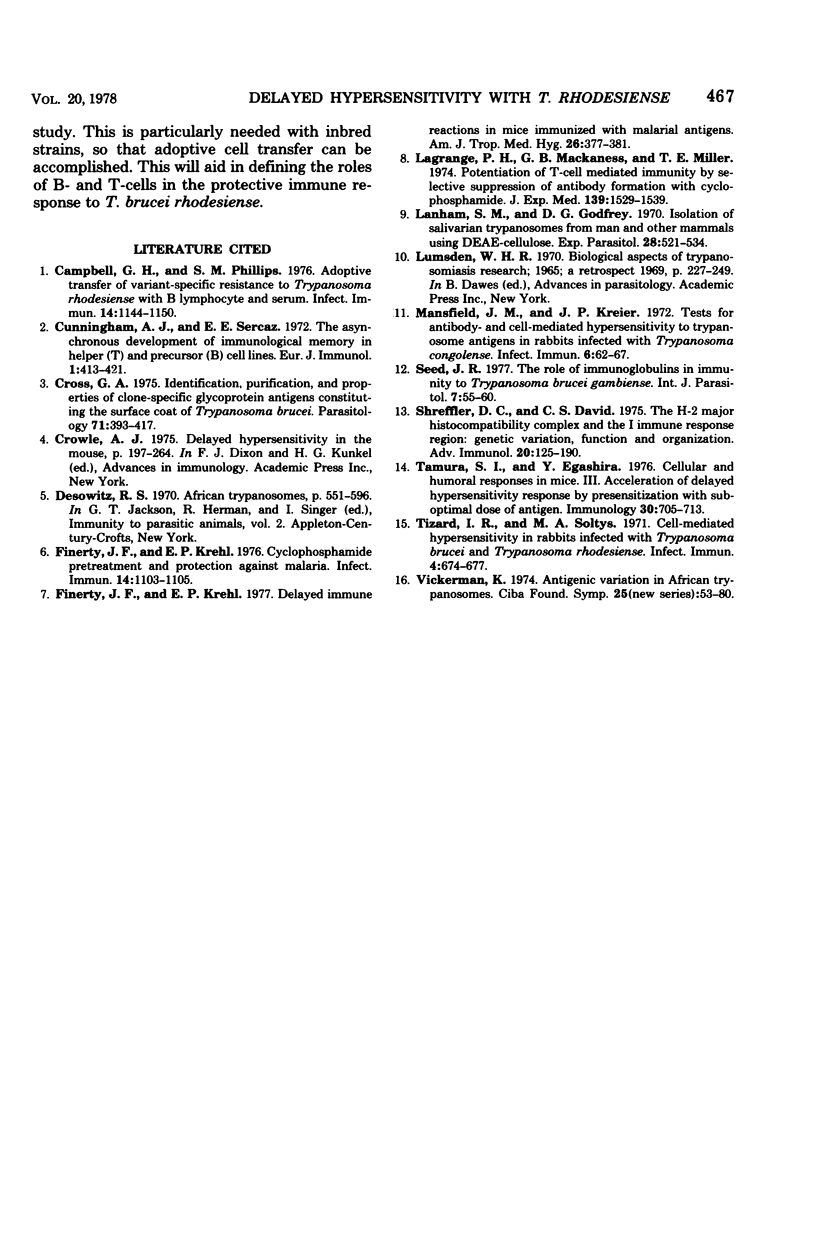Abstract
When mice were immunized intravenously, subcutaneously, or by the footpad route with formaldehyde-killed Trypanosoma rhodesiense, delayed-type hypersensitivity was elicited by the use of frozen-thawed trypanosomal antigen. The delayed footpad swelling technique was used to measure delayed hypersensitivity. Hypersensitivity induction was dose dependent (greater than or equal to 10(6) formaldehyde-treated T. rhodesiense) and was affected by the route of immunization. The footpad route induced higher levels of hypersensitivity than other routes of immunization. Mice immunized with a single dose of formaldehyde-treated antigen and challenged with live T. rhodesiense did not survive. Yet, mice immunized subcutaneously with formaldehyde-treated antigen and then injected with frozen-thawed antigen and challenged 28 days after immunization survived. The results suggest that T-cell activation, manifested by delayed hypersensitivity responses, was a necessary component in the protective response, perhaps functioning in a helper cell capacity.
Full text
PDF



Selected References
These references are in PubMed. This may not be the complete list of references from this article.
- Campbell G. H., Phillips S. M. Adoptive transfer of variant-specific resistance to Trypanosoma rhodesiense with B lymphocytes and serum. Infect Immun. 1976 Nov;14(5):1144–1150. doi: 10.1128/iai.14.5.1144-1150.1976. [DOI] [PMC free article] [PubMed] [Google Scholar]
- Cross G. A. Identification, purification and properties of clone-specific glycoprotein antigens constituting the surface coat of Trypanosoma brucei. Parasitology. 1975 Dec;71(3):393–417. doi: 10.1017/s003118200004717x. [DOI] [PubMed] [Google Scholar]
- Crowle A. J. Delayed hypersensitivity in the mouse. Adv Immunol. 1975;20:197–264. doi: 10.1016/s0065-2776(08)60209-6. [DOI] [PubMed] [Google Scholar]
- Cunningham A. J., Sercarz E. E. The asynchronous development of immunological memory in helper (T) and precursor (B) cell lines. Eur J Immunol. 1971 Dec;1(6):413–421. doi: 10.1002/eji.1830010602. [DOI] [PubMed] [Google Scholar]
- Finerty J. F., Krehl E. P. Cyclophosphamide pretreatment and protection against malaria. Infect Immun. 1976 Oct;14(4):1103–1105. doi: 10.1128/iai.14.4.1103-1105.1976. [DOI] [PMC free article] [PubMed] [Google Scholar]
- Finerty J. F., Krehl E. P. Delayed immune reactions in mice immunized with malarial antigen. Am J Trop Med Hyg. 1977 May;26(3):377–381. doi: 10.4269/ajtmh.1977.26.377. [DOI] [PubMed] [Google Scholar]
- Lagrange P. H., Mackaness G. B., Miller T. E. Potentiation of T-cell-mediated immunity by selective suppression of antibody formation with cyclophosphamide. J Exp Med. 1974 Jun 1;139(6):1529–1539. doi: 10.1084/jem.139.6.1529. [DOI] [PMC free article] [PubMed] [Google Scholar]
- Lanham S. M., Godfrey D. G. Isolation of salivarian trypanosomes from man and other mammals using DEAE-cellulose. Exp Parasitol. 1970 Dec;28(3):521–534. doi: 10.1016/0014-4894(70)90120-7. [DOI] [PubMed] [Google Scholar]
- Lumsden W. H. Biological aspects of trypanosomiasis research, 1965; a retrospect, 1969. Adv Parasitol. 1970;8:227–249. doi: 10.1016/s0065-308x(08)60255-9. [DOI] [PubMed] [Google Scholar]
- Mansfield J. M., Kreier J. P. Tests for antibody- and cell-mediated hypersensitivity to trypanosome antigens in rabbits infected with Trypanosoma congolense. Infect Immun. 1972 Jul;6(1):62–67. doi: 10.1128/iai.6.1.62-67.1972. [DOI] [PMC free article] [PubMed] [Google Scholar]
- Seed J. R. The role of immunoglobulins in immunity to Trypanosoma brucei gambiense. Int J Parasitol. 1977 Feb;7(1):55–60. doi: 10.1016/0020-7519(77)90025-x. [DOI] [PubMed] [Google Scholar]
- Shreffler D. C., David C. S. The H-2 major histocompatibility complex and the I immune response region: genetic variation, function, and organization. Adv Immunol. 1975;20:125–195. doi: 10.1016/s0065-2776(08)60208-4. [DOI] [PubMed] [Google Scholar]
- Tamura S. I., Egashira Y. Cellular and humorial immune responses in mice. III. Acceleration of delayed hypersensitivity response by presensitization with suboptimal dose of antigen. Immunology. 1976 May;30(5):705–713. [PMC free article] [PubMed] [Google Scholar]
- Tizard I. R., Soltys M. A. Cell-mediated hypersensitivity in rabbits infected with Trypanosoma brucei and Trypanosoma rhodesiense. Infect Immun. 1971 Dec;4(6):674–677. doi: 10.1128/iai.4.6.674-677.1971. [DOI] [PMC free article] [PubMed] [Google Scholar]


